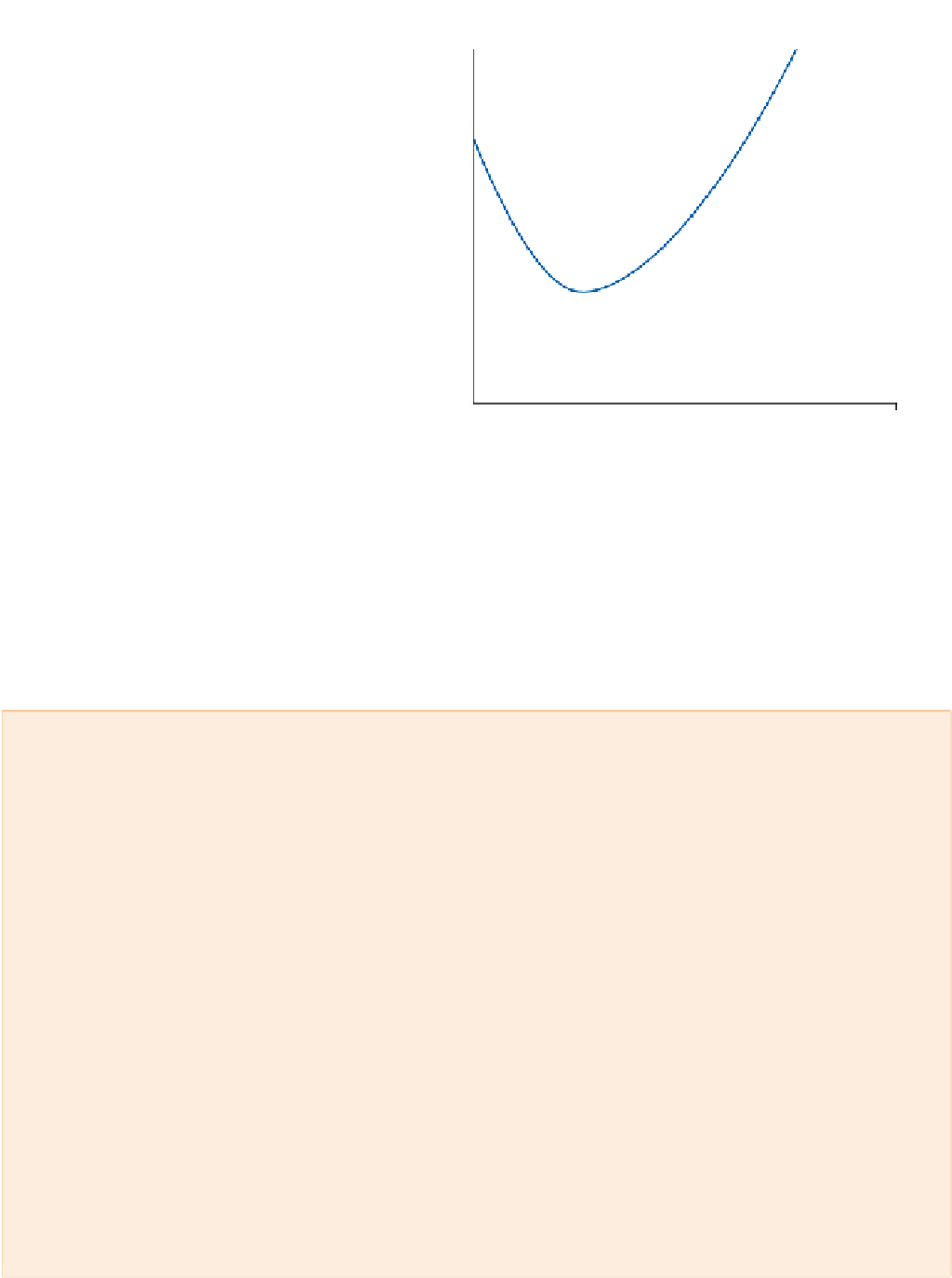Geoscience Reference
In-Depth Information
(a)
(b)
8
1000
Fluid
threshold
100
6
10
4
Impact
threshold
1
Grassy
surface
Bare
surface
2
0.1
0.02
0.06 0.2
Silt and sand particle size, mm
0.6
2.0
0
Fine
sand
Medium
sand
Coarse
sand
0
1
2
Wind velocity, m s
-1
3
4
Silt
Figure 16.1
Comparitive threshold conditions for deflation: (a) wind velocity over a bare surface and 10 cm tall grass layer and
(b) particle size-velocity relationship for entrainment (fluid) and ballistic impact.
Source: After Warren (1979)
Climate, tectonics and deserts
SYSTEMS
Aeolian environments cover 20 per cent of global land surfaces, closely associated with hot and cold desert
environments in zones of atmospheric subsidence and surface divergence of generally light winds. They are not
found in Earth's principal storm and rain belts, which are also well vegetated. Large-scale atmospheric subsidence
provides a drying influence and blows out of continental interiors, isolating them from maritime moisture sources.
Hot deserts are located beneath subtropical divergence on the poleward side of the Hadley cell (see
Chapter 6).
Polar
divergence was also strengthened by the katabatic effects of Quaternary ice sheets, accounting for mid- to high-
latitude loess sheets, and weaker winter cold continental outflow today. Ocean circulation - influenced by tectonics
(see
Chapter 11,
p.237) - also contributes to coastal deserts through the upwelling of cold currents on western coasts
in the case of the Mojave, Sonora and Atacama deserts of the Americas, the Namibian desert of south-west Africa
and the Western Australian desert (
Figure 16.2
).
Zonal climate does not account wholly for desert location and landsystems. Morphotectonics inevitably superimpose
their influence through rain-shadow effects, altitude and the deflatable products of erosion. Coastal cordillera
reinforce the arid impact of coastal upwelling by extending their rain shadow across continental interiors. The latter
is most pronounced in the Basin Range region of the south-west United States (see
Chapter 13,
p.300) and leeward
of the Bolivian Altiplano and still rising Tibetan plateau, whose elevation by 3·5 km during 2 Ma of the Plio-Pleistocene
greatly extended north central Asian interior deserts. Tectonic uplift and subsidence also play active and passive roles
respectively in hot desert denudation processes, sourcing or collecting aeolian materials in sedimentary basins, and
hence linked with their geomorphic landsystems.













































































